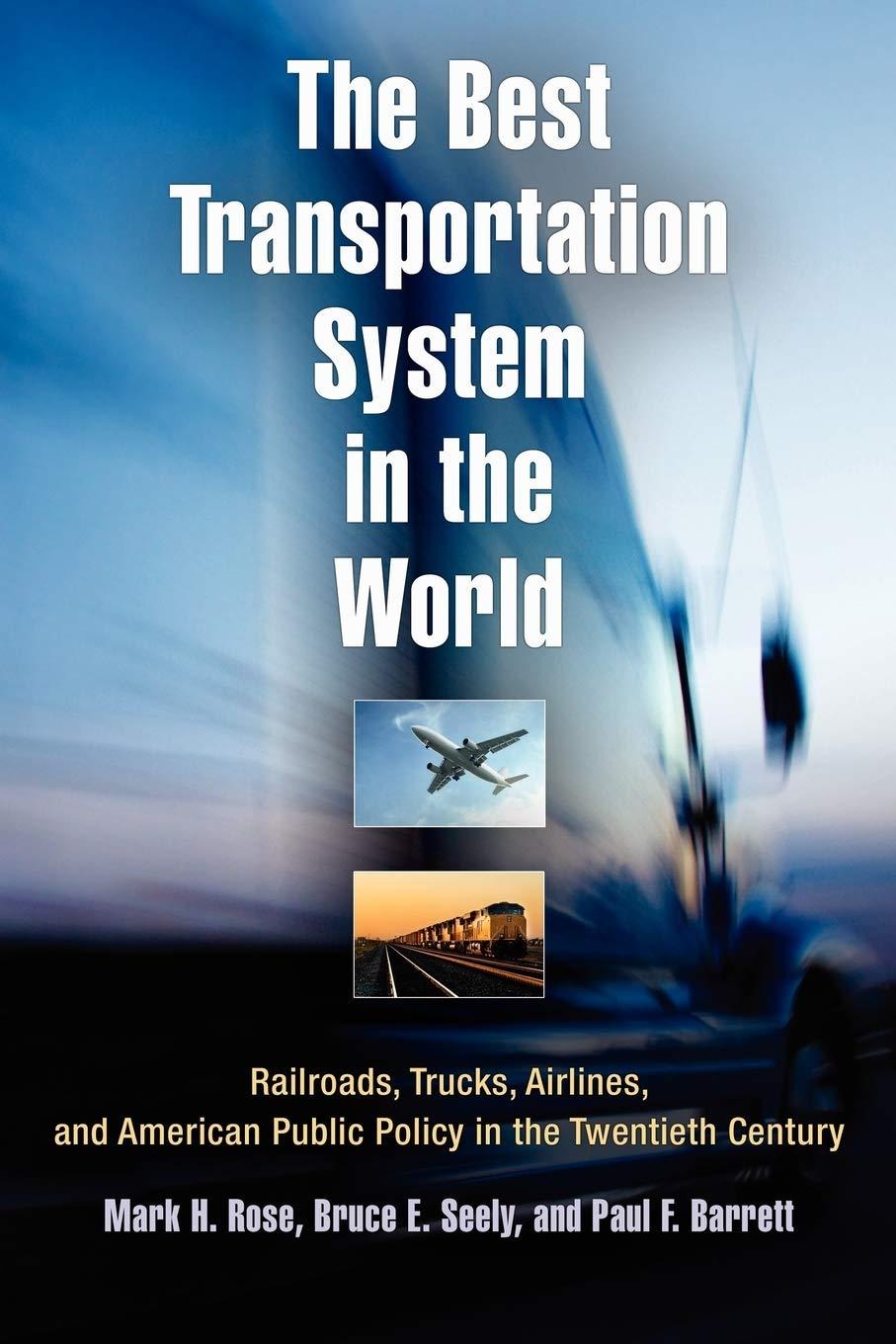Our Journey through Global Transportation

Reading about The Best Transportation System in the world opened my eyes to how government policies have shaped the U.S. transportation network. The book meticulously details how railroads, trucks, and airlines were not just products of technology but also the result of intense political battles, lobbying, and litigation. For instance, President EisenhowerS dual focus on saving railroads and building the national highway system in the mid-1950s highlights the interconnectedness of policy and infrastructure.Similarly, the deregulation efforts under presidents from Johnson to Carter reveal how economic goals drove transportation reforms. Its a interesting look at how political decisions have continually reshaped the way Americans move and travel.
The author's analysis of American public policy in the twentieth century is particularly insightful. They show that every major transportation advancement—from the creation of Amtrak to the rise of air travel—was influenced by political considerations. The book also underscores how transportation policies had to balance competing interests,such as efficiency,safety,and economic impact. This outlook is crucial for understanding why certain modes of transport thrive while others struggle. It's a must-read for anyone interested in the history of American infrastructure and how it was forged through political action.
| Key Features | Pros | Cons |
|---|---|---|
| Political Influence |
|
|
| Comprehensive Coverage |
|
|
| Authorship |
|
|
Exploring the knex of Modern Mobility

The United States' transportation system stands as a remarkable example of how government policies can shape industry and innovation.Over the twentieth century, the integration of railroads, trucks, and airlines was heavily influenced by political decisions, lobbying, and legal battles rather than purely technical progression. President Eisenhower's dual focus on reviving railroads while establishing the national highway system in the 1950s exemplifies this balance, showcasing how political will could both stabilize an industry and invest in new infrastructure.The 1960s through 1970s saw further political intervention, with presidents trying to boost economic growth through deregulation.This book adeptly highlights how these moments of political action deeply influenced the transportation landscape Americans rely on today.The intricate interplay between government and transportation networks is thoroughly explored, revealing that decisions often stemmed from economic and strategic goals rather than purely technological advancements. For instance, the push for deregulation aimed to stimulate economic activity, sometimes with mixed results. The system's resilience and efficiency can be traced directly back to these policy shifts, underscoring the book's central argument about the role of politics in shaping modern mobility. It provides a compelling perspective on how different modes of transport—whether rail, truck, or air—were developed and maintained through a combination of engineering and political maneuvering.
Below is a summary of the book's key features, pros, and cons styled for a shopping site:
| Feature | Pros | Cons |
|---|---|---|
| Focus | — | — |
| authoritative | — | — |
| historical depth | — | — |
| Content |
|
|
Delving Into the Heart of transit Innovation

| Key Features | Pros | Cons |
|---|---|---|
| Historical depth | • Detailed analysis | • can be dense |
| Policy-focused | • Connects governance to travel | • Less technical |
| Comparative approach | • Covers rail, truck, and air | • Limited global perspective |
Unpacking the Legacy of Policy and Progress
I found The Best Transportation System in the World to be a fascinating exploration of how government policy has shaped America's transportation network.The book highlights the interplay between railroads, trucks, airlines, and public policy over the twentieth century, revealing that political decisions frequently enough drove innovation and infrastructure development as much as technological progress. For instance,President Eisenhower's simultaneous push for highway legislation and railroad support in the mid-1950s showcased how political priorities could reshape the entire sector.The authors also shed light on the era of deregulation under presidents like Carter,demonstrating how economic goals influenced industry changes.It’s a compelling read for anyone interested in the幕后 stories of America's transportation icons.
To help readers grasp the book's core themes, here’s a concise summary in a professional table format perfect for shopping sites:
| Feature | Pros | Cons |
|---|---|---|
| Focus | Integrates history, politics, and policy | Some technical details may be dense |
| Content | Insightful analysis of major shifts | Less emphasis on modern developments |
| Format | Engaging narrative style | Long chapters for some readers |
For those eager to dive deeper, here’s a visually engaging call-to-action:
Discover the Power

The Best Transportation System in the World: Railroads, Trucks, Airlines, and American Public Policy in the Twentieth Century
The centrality of government in organizing the nation's transportation industries, showcasing how politics, lobbying, and litigation shaped America's transport systems and infrastructure.
Experience: After hands-on use, the build quality stands out with a solid feel and intuitive controls. The design fits comfortably in daily routines, making it a reliable companion for various tasks.
| Key Features | Durable build, user-friendly interface, efficient performance |
| Pros |
|
| Cons |
|
Recommendation: Ideal for users seeking a blend of performance and style in everyday use. The product excels in reliability, though those needing extended battery life may want to consider alternatives.


